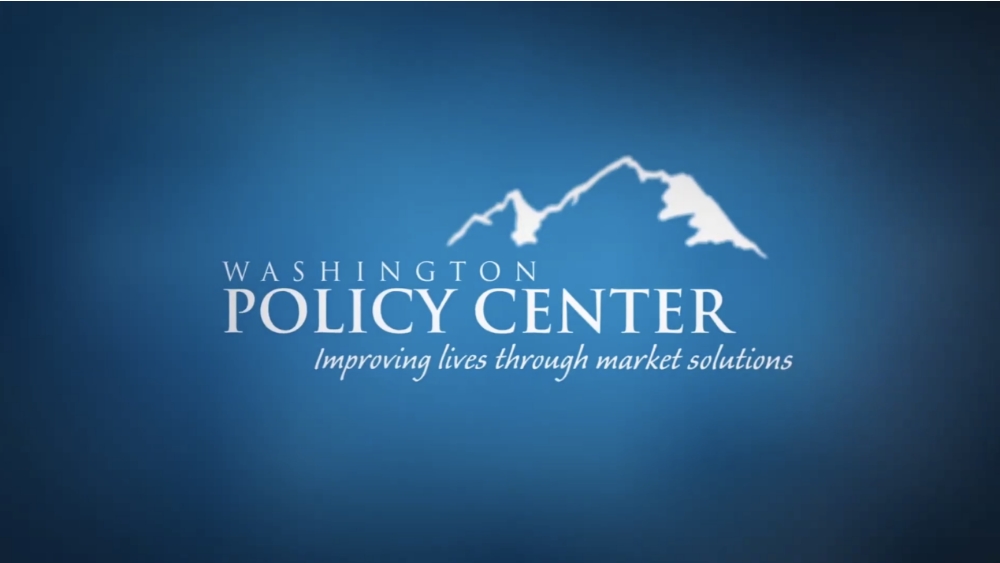Key Findings
- Seattle’s experience with the Supersonic Transport (SST) aircraft demonstrates that when politicians show favoritism to a particular economic sector the cost is high in taxpayer money, lost jobs and slower economic growth.
- The failure of SST shows that imposing economic policies based on trying to beat foreign competition does not work.
- Politicians are not good at predicting future economic trends or at picking the next successful technology and should avoid risking limited taxpayer resources on political guesses.
“China right now is preparing to roll out electric cars, lithium ion batteries, solar cells, cellulosic ethanol. This is where the future of energy is.”
- Congressman Jay Inslee (D-WA), 2010
“There are those who say we should not have an SST. To them, I say we are vividly in an era of supersonic transports, with both the Russians and the British-French consortium way ahead of us technologically. Economically, it is obvious that we must compete, but we lose our technological supremacy and our American dollars to the Communists or the British and French.”
- Congressman Thomas Pelly (R-WA), 1969
It is an article of faith of politicians and some environmentalists that we know exactly where the world economy is headed. They believe we can predict what the future will be like and the only question for today is who will have the courage to take advantage of what is so obvious.
Indeed, Governor Inslee and others argue with great certainty that there simply is no alternative to producing renewable energy – either we do it, or the Chinese will and leave us behind.
That tone of certainty should sound familiar to Washington residents. That attitude of false confidence almost ruined Boeing in the 1970s.
Arguing that it was critical to keeping the United States on the forefront of technological innovation, Congress voted in 1969 to spend $96 million to develop the Supersonic Transport airplane (SST). The funding, on top of more than $600 million that had already been spent in the 1960s (equivalent to more than $4 billion today), was given to Boeing to develop what seemed like the obvious next step in airline transport. The idea created such high hopes that when Seattle landed a basketball team in 1967, it was dubbed the “SuperSonics.”
The bright promise of the taxpayer-funded aircraft, however, never emerged. The collapse of the project was so dramatic it led to a sharp regional economic downturn, leading some to ask the last person leaving Seattle to “turn out the lights.”
Just as futurists argued in 1969 that “there is not any question we are going to have the supersonic transport,” advocates today say that green energy “is where the future of energy is.”
In the end, the supersonic transport failed and countries that did develop a super fast aircraft found its use extremely limited. What appeared obvious in 1969 was a miserable bust only a few years later. From the promise of thousands of new jobs to world technological leadership, the debate about the SST had all of the same elements of the current debate about the politically chosen “green” energy sector.
The SST debacle should provide the public and politicians with an object lesson in the high cost of false certainty and remind everyone how difficult it is to predict the future. It demonstrates the folly of putting so many of Washington’s eggs in the “green” energy basket.
Job Creation and Government Profit
Supporters of both the SST and green energy claimed their favored projects would create tens of thousands of new jobs.
In 1969, Washington State Congressman Thomas Pelly argued that the SST would create “a minimum of 50,000 new skilled and unskilled jobs across our land.” Similarly, in 2010, Governor Gregoire commissioned a report claiming her climate “plan could create an incremental over 50,000 direct and indirect clean energy jobs.” To futurists there is apparently something comforting about the number 50,000.
None of those promises panned out, however.
Oregon, named the top state for green jobs in the country by Pew has an unemployment rate higher than the national average. Inland Empire Oilseeds, a biofuel company located in Odessa, WA filed for bankruptcy earlier this year after repeated problems with government regulation and subsidies. Grays Harbor County, which once boasted that green jobs would replace lost timber jobs, continues to have the highest unemployment rate in the state, despite having a biofuel refinery and a “green” paper plant.
False job predictions are not the only similarities between the broken promises of the SST and green energy.
Supporters of the SST, like supporters of “green” energy, claimed the expenditures were actually “investments” that would pay for themselves. In the floor debate in 1969, Congressman Conte of Massachusetts claimed the SST was “a good investment that promises to pay handsomely in the long-run. This is not a subsidy, but rather, I repeat, a national investment designed to be self-liquidating.” Much as was claimed with General Motors, members of Congress expected the government to turn a profit on the hundreds of millions in tax money it gave to Boeing.
Of course the SST was never built and the market for supersonic transport aircraft never materialized, despite the certainty of SST supporters. Taxpayers lost nearly $1 billion before the failed program was canceled.
Similarly, Washington state politicians argue that “investments” in green energy will pay for themselves and even make money for the state. Governor Gregoire’s Clean Energy Leadership Council called for the state to give money to favored businesses like a venture capitalist. The claim was that state money would leverage additional private funding to create strong businesses and the state would at least break even on the investment. This has not been the case.
In California, where politicians required the state to buy green energy stocks as part of its investment portfolio, the return was significantly lower than other state funds.
Even with subsidies and favorable regulations, it is simply unclear which green energy technology will emerge. For example, Inland Empire Oilseeds filed for bankruptcy earlier this year despite state and federal subsidies and regulations requiring oil companies and consumers to buy its product.
History Seemed to be On Their Side
In each case these ill-fated programs were justified because advocates “just knew” they were the wave of the future. They were can’t miss ideas because the logic of technology and history pointed inexorably in their direction. Until it didn’t.
In this vein, Massachusetts Congressman Edward Boland told Congress in 1969 that “the history of transportation, not only the history of aviation, is the history of ever increasing speed – and the SST is the latest step in this direction.” Despite seeming like the obvious next step, increasing air speed has not been the focus of the last forty years. Instead, Boeing and other companies have emphasized fuel efficiency, size and other attributes, but travel speed has not increased appreciably.
To add urgency to certainty, politicians warn that if we don’t quickly spend on this obvious soon-to-arrive technology, others will.
Forty years ago, the supposed enemies were the Europeans and the Soviets. Washington state Congressman Lloyd Meeds said plainly that the SST is the way of the future and “the other great powers recognize that simple fact – Great Britain, France and Russia. They are building their versions of a supersonic aircraft.” Congressman William Minshall of Ohio confidently told Congress, “the main issue before us today is, simply, whether we build SST’s or buy them. To me, the answer is obvious, we must build an American version of the SST.”
Ultimately both the Soviets and the Europeans did, in fact, build their own supersonic aircraft. They amounted to little, however. The Concorde was of limited use and was permanently retired after an accident in 2000. The Soviet TU-144 (known as the “Concordski”) made only 55 commercial flights before it was grounded for safety problems.
Today, the specter of foreign countries overtaking the United States in a key area of technology is frequently cited. Five years ago, politicians like Barack Obama told Americans that Spain, which had an unemployment rate of 8 percent, would lead the revolution in green energy. With an unemployment rate today of 27 percent, few mention Spain as a leader anymore. Today, China (despite having a per capita income one-tenth that of the United States) is the favored enemy.
Voices of Caution
Just as today, however, there were those who offered warnings about risking taxpayer dollars on what seemed like a sure thing. Just like today, those voices of reason were ignored until huge sums of money had already been lost.
For example, one member of Congress presciently warned that seducing Boeing to go down a failed path with huge sums of taxpayer funding could do serious damage to its future and the futures of its workers. Illinois Congressman Sidney Yates warned “if the SST is not commercially viable – and there are very strong arguments that it is not commercially viable – I think there is a good chance that Boeing may go bust.” Indeed, that is almost exactly what happened.
In 1971, after the SST was finally canceled, Boeing laid off tens of thousands of employees, and the ensuing recession became known as “the Boeing Bust.” As Washington State history page HistoryLink.org notes, “During the ensuing two-year ‘Boeing Bust,’ the company laid off more than 60,000 employees, went a billion dollars into the red, and sent the regional economy into a tailspin.”
Boeing recovered, but the quixotic effort at building the SST, encouraged by Congress with huge sums of taxpayer dollars, did serious damage to the company and to Seattle’s economy.
Another problem that arises when politicians partner with a particular industry is they bend the rules for that industry. When politicians promise taxpayer funding is an “investment” that will pay for itself, there is a strong incentive to make that prediction come true. When a project begins to fail, undermining the promised benefits, politicians pile on additional favorable rules and funding.
This is exactly what has happened with government funding of solar projects and it was a concern of those who questioned funding the SST.
For example, a key element of the SST’s ultimate cancellation were concerns about the impact of loud sonic booms over the United States. Those booms, created when an aircraft breaks the sound barrier, can break windows and cause other damage on the ground. To counter this concern, supporters of the SST promised it would only achieve very high speeds over water. Those limits, however, undermined the potential profitability of the SST. What would Congress do if expanding routes was the only way for the government to gain the promised rewards of its “investment”?
Congressman George Brown of California noted that pressure to allow sonic overland flights would increase if the SST were not living up to economic promises. He told Congress, “if we allow the SST to be built, and it begins to lose lots of money, when the pressure begins to be applied to permit overland flights, it is not hard to guess who will prevail in the struggle between the industry lobbies and the public interest.” Politicians and industry, finding their credibility and profitability hampered by these restrictions, might decide the restrictions aren’t needed after all.
That is exactly what has happened with America’s solar policy.
After suffering the political embarrassment of the Solyndra bankruptcy, the Obama Administration increased tariffs on Chinese solar panels in an effort to prevent other government-sponsored solar companies from collapsing. Higher tariffs, of course, drives the price of solar panels up and makes them more difficult to purchase – reducing the supply of renewable energy – but it helps protect the companies in which so much political credibility has been placed. Ironically, helping the environment was sacrificed to prevent another politically embarrassing failure of taxpayer-subsidized “green” businesses.
As Congressman Brown warned in 1969, when political promises collide with reality, politicians are quick to bend the rules even if doing so undermines the very goal they profess to support.
The High Cost of False Certainty
In 1971, after hundreds of millions of taxpayer dollars had been poured into the project, the SST was canceled when Congress refused to appropriate an additional $134 million. The course of history and the development of more efficient and larger planes have demonstrated that speed wasn’t, after all, the obvious direction of aircraft development. No other manufacturer or country developed another supersonic aircraft and there are none in service today.
In 1969, however, it was obvious to anyone who would take a moment to look that supersonic aircraft were the next step. Just a decade later, what once seemed so obvious was old news.
The simple reason is that predicting the future is far more difficult than politicians want to admit. Even if reducing carbon is the general goal, it is extremely difficult to predict what course history will take in achieving that goal.
Ten years from now we may find the development of superconductivity has dramatically increased our electrical capacity and significantly reduced carbon emissions per unit of energy. The promised breakthrough in solar efficiency might, as it has since the time of the SST, continue to elude us. We may find that wind energy is becoming more expensive as the best sites are taken. We may find that some other energy generation or efficiency technology is more important than anything in existence today.
Unfortunately, there is unlikely to be a shortage of politicians wanting to spend taxpayer dollars on whatever technology they think will create jobs, make America a world leader and create a better world. The logic of history may not allow us to accurately predict the future of technology, but the promises of politicians seem never to change.
Whatever new technology does emerge, however, is far more likely to come from the creativity of people willing to risk their own money, than those who would gamble the economy on the promises of politicians.
Download a PDF version of this Policy Note here.




